[Wanderlust Tips July 2018] The first thing that made me get excited when going to Korea was to learn more about Kimchi. There are more than one hundred kinds and I also got inspiration from learning about it in movies I have seen. This is the reason why South Korea is called “the land of kimchi”. To put it more clearly, we need to travel through a time machine.
[rpi]
The first thing that made me excited when going to Korea was to learn more about Kimchi. There are more than one hundred kinds and I also got inspiration from learning about it in movies I have seen. This is the reason why South Korea is called “The land of kimchi”. To put it more clearly, we need to we need to travel through a time machine.
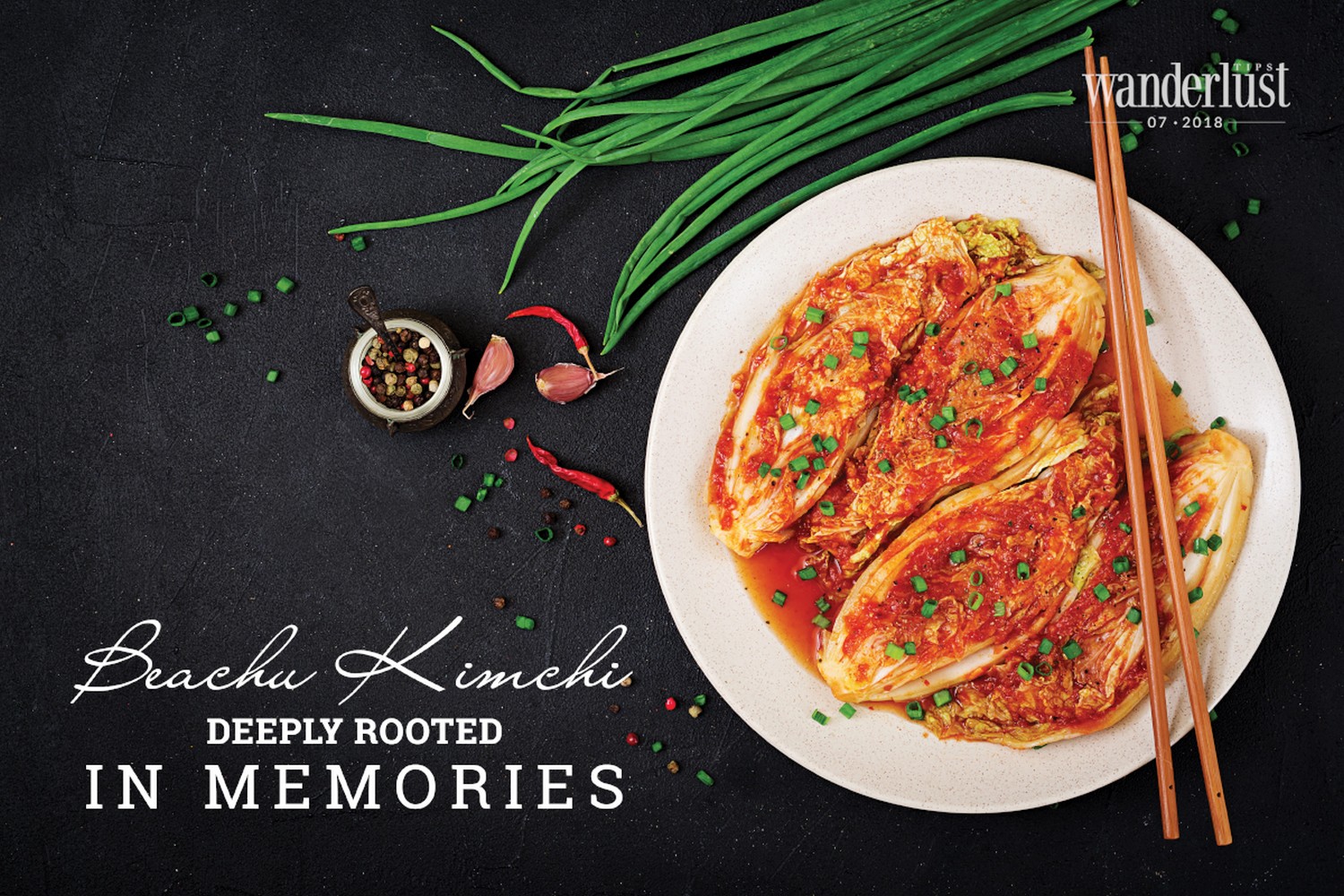
Legend has it that kimchi has a long history, tracing back to 2,600-3,000years ago when it was called by the Hanja name “chimchae” (pickled vegetables), which was simply processed from cabbage and salt water to preserve cabbage after harvest. This method of preservation was also quite popular in other countries. However, in the 12th century, Koreans began to add other spices to create to create a richer tasting kimchi, turning it into an indispensable dish in everyday meals.”Baechu kimchi” is the most popular kind of kimchi to Koreans today. In the past, the cabbage was only marinated with a lot of hot red chili peppers and garlic, and then underwent the fermentation process. In the summer, when this process took place quickly, kimchi was made and eaten in one day. In the winter, large jars of kimchi were wrapped in straw and put underground to keep them warm. In this way, the fermentation would last for several months. Kimchi is hot but rich in vitamins, minerals, and lactic acid. It is good for the intestines and is believed to prevent cancer.
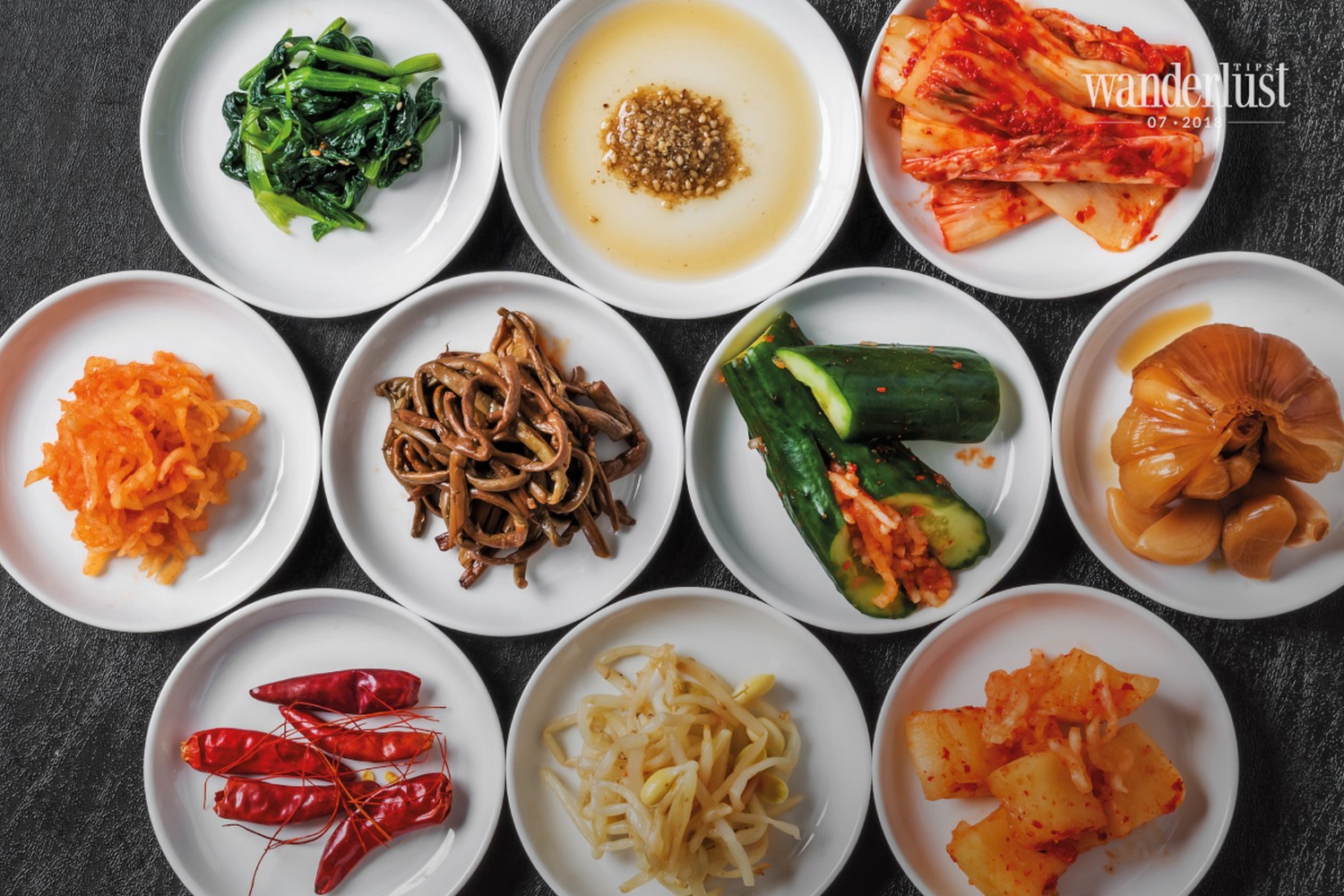
Today, besides chili and garlic, cabbage is marinated with many other spices such as green onions, celery, sesame oil, rice wine, and soy sauce because the essence of Korean cuisine is that dishes should be full of flavors: sweet, salty, sour, spicy, and bitter. Up to now, many families still make kimchi in the traditional way. Some modern families store kimchi at a temperature of 4degrees Celsius in a small refrigerator. The cultural importance of gimjang was recognized by UNESCO as an Intangible Cultural Heritage of Humanity in 2013.
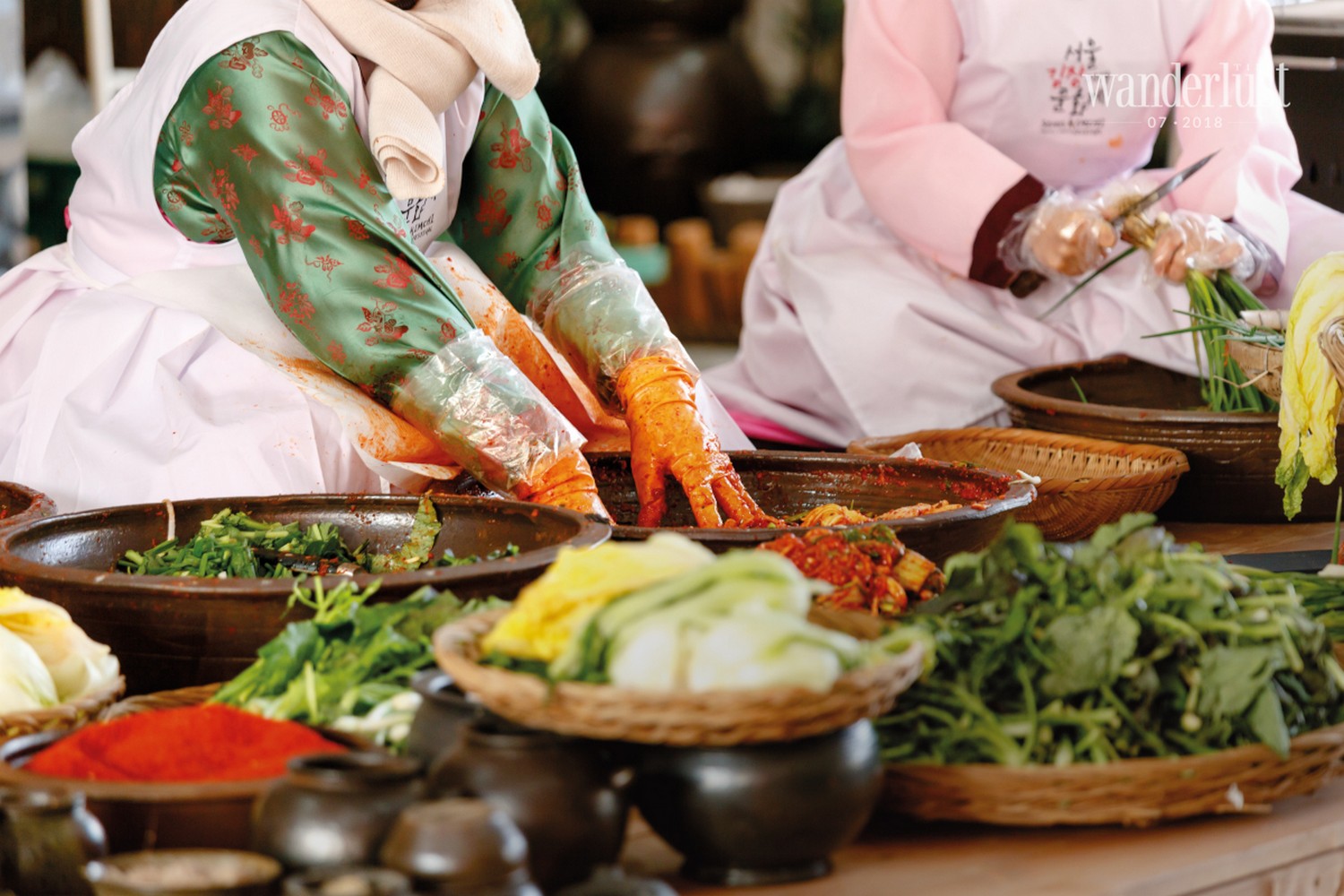
In addition to adding more diverse marinated ingredients, Koreans have also created various kinds of kimchi. In Seoul, we had a chance to try kimchi baek (it is also made from napa cabbage without using chili powder which helps to keep the cabbage white), kkakdugi (diced radish kimchi made from radish cut into small cubes), oisobaegi (stuffed cucumber kimchi), yeolmu kimchi (young summer radish kimchi), pa kimchi (green onion kimchi), buchu kimchi (garlic chives kimchi), nabak kimchi (water kimchi – a special kind of kimchi served with the refreshing broth that is plain, pure, and less spicy tastes, which is used as soup and a suitable dish to cool off on hot summer days).
In addition to eating kimchi as a side dish, Koreans also use it as an ingredient to create other signature dishes such as kimchi soup, kimchi pancake, kimchi fried rice, kimchi fried eggs, Kimchi mandu, and slow cooked Kimchi Stew with Beef.
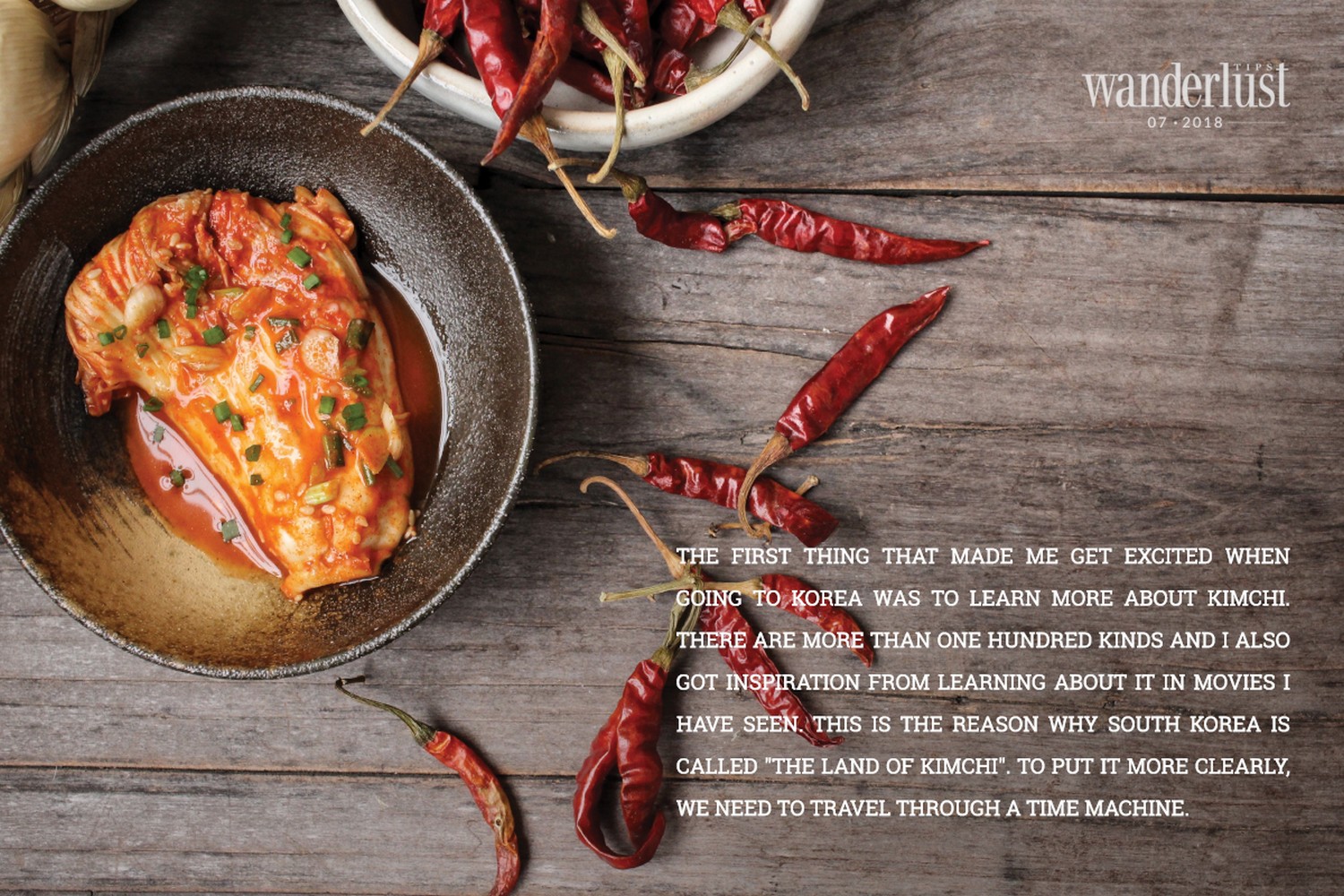
Every year, from the 24th to 28th of October, the Kimchi Festival in Korea is held by having a kimchi making competition, a kimchi seminar, and cultural performances. Raw materials are carefully selected and made in the contest. Tourists can choose from over one hundred types of fresh kimchi or order through local websites. Koreans are so admirable when they are able to turn an ordinary dish into a signature one, capture the soul of the country, as well as be a great food ambassador.Have you ever seen the famous Korean film Le Grand Chef 2: Kimchi Battle? The film tells the story of two sisters being raised by a mother but they were always in disagreement with one another. Taking part in a kimchi competition held by the Korean government, in the first two rounds, the older sister chose to make kimchi by using a new method, bringing the breath of modern life into the traditional kimchi; while the younger sister chose to make the best kimchi from traditional materials.
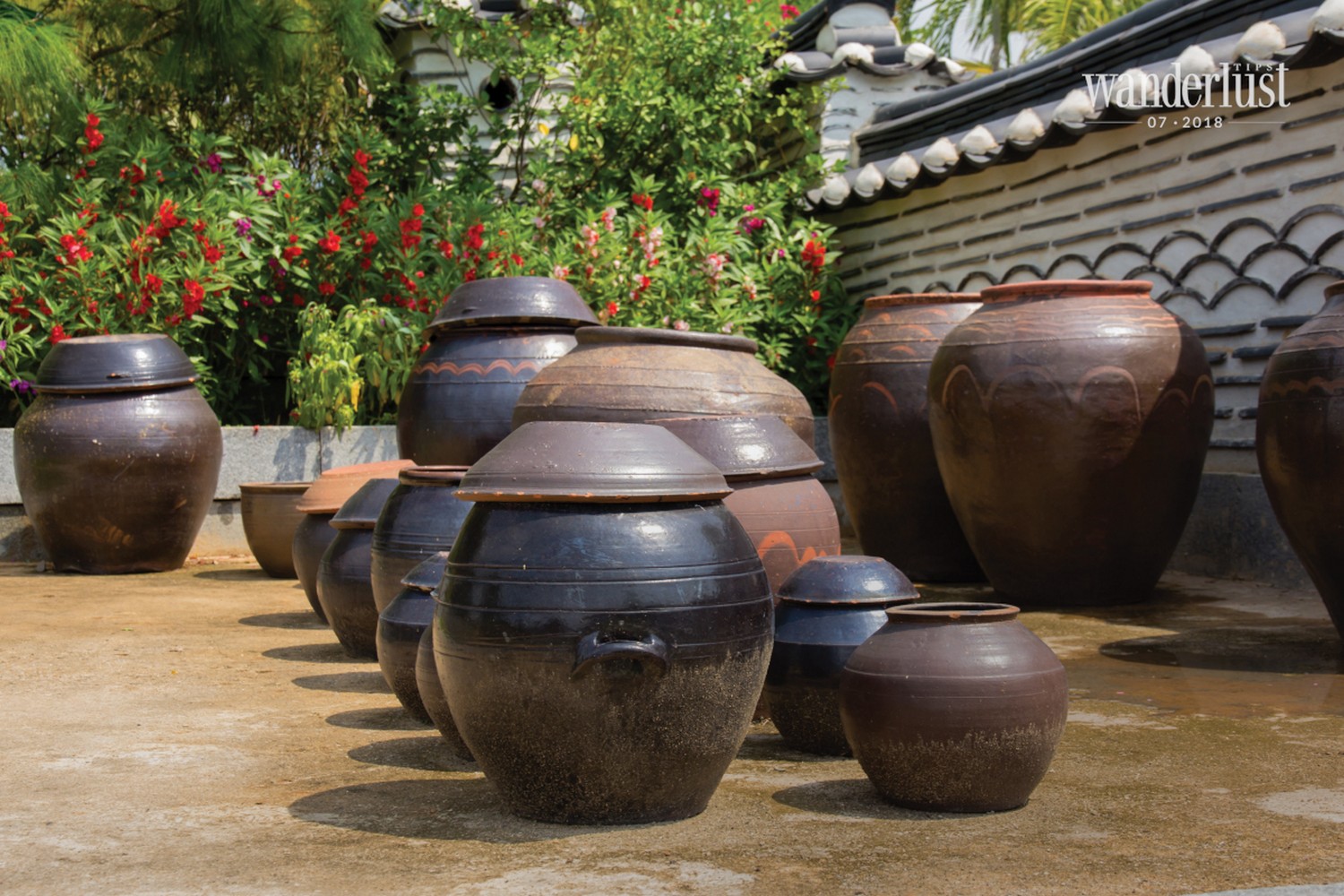
In the final round, with the theme of “Make a kimchi that is loved by the whole world”, the two sisters chose to make the traditional and most popular baechu kimchi which took the judges by surprise. They remembered the taste of the kimchi made by their mothers. I was impressed by one judge›s statement: “How can the whole world welcome kimchi that is not even familiar with us?”. The message of the movie is very clear: baechu kimchi is the one that creates the strongest feeling of connection; it is like the roots intertwined deeply in the memory of people, helping them remember the smell of their mothers, their childhood, and their homes.
Personally, after trying a variety of unique and delicious types of kimchi, baechu kimchi is still my favorite. How about you?
Lê Ngọc | Wanderlust Tips


[…] me, Korean cuisine has always had a very unique flavour. It is the sizzle of an aromatic barbecue or the crispy fried […]